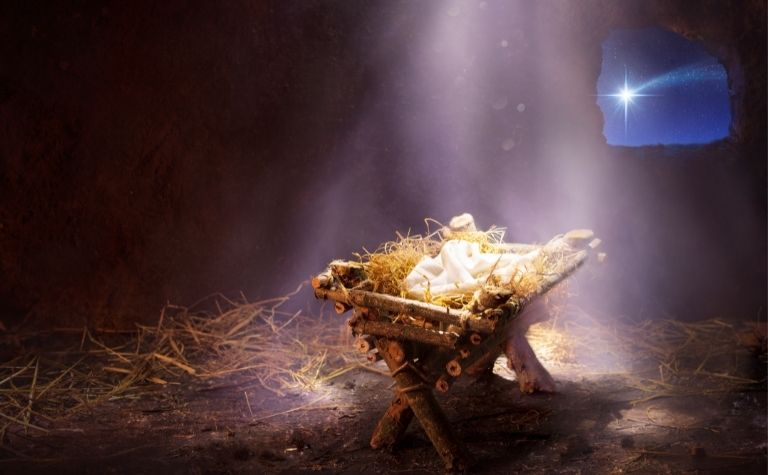Bethlehem, often described as a humble town in the Judean hills, holds a monumental place in Christian narratives.
It’s recognized not just as a geographical location but as the birthplace of a figure who transformed the course of history – Jesus Christ.
Central to this narrative is the journey undertaken by Mary and Joseph from Nazareth to Bethlehem.
Motivated by external obligations and divine design, this trip wasn’t a matter of chance but of profound significance.

Historical Context
The backdrop of Mary and Joseph’s journey can be best understood by peeling back the layers of history.
During their lifetime, the mighty Roman Empire’s tentacles stretched across vast territories, and Judea was no exception. Being meticulous administrators, the Romans kept detailed records.
Censuses were a regular administrative task, crucial for understanding the demographics and ensuring efficient taxation and assessing the strength of potential conscripts for the formidable Roman legions.
The Decree from Caesar Augustus
Emperor Caesar Augustus, during his reign, issued a decree that resonated across the length and breadth of the Roman Empire.
This proclamation mandated that everyone should be registered in their ancestral town.
This wasn’t a mere bureaucratic exercise but an assertion of Roman authority and organization.
For Joseph, the decree translated into a non-negotiable journey from Nazareth to Bethlehem, his family’s town of origin.

The Lineage of Joseph
An essential piece in this puzzle is Joseph’s heritage. He hailed from the house of David, one of Israel’s most iconic kings.
Given David’s roots in Bethlehem, Joseph’s ties to this town were deep-rooted.
The Roman decree, which might seem like a worldly administrative matter at first, was instrumental in ensuring events unfolded in alignment with longstanding prophecies.
Mary’s Pregnancy
Amid these external decrees and prophecies was a personal story – Mary’s miraculous pregnancy.
By the time of the journey, Mary was heavily pregnant, having been told months earlier by the angel Gabriel that she would bear a child named Jesus.
The decision for an expectant Mary to accompany Joseph wasn’t a simple one.
Cultural expectations of the era might have deemed it inappropriate for Mary, especially in her condition, to stay behind.
The significance of the child she carried and the bond it fostered between the couple might have also influenced her decision.

Bethlehem’s Significance in Prophecy
Mary and Joseph’s journey wasn’t just a result of a Roman mandate; it was also a fulfillment of ancient prophecies.
The Old Testament, especially writings like those in the book of Micah, specifically identified Bethlehem as the birthplace of a future ruler of Israel.
This underlined Bethlehem’s importance in the overarching narrative and emphasized the role of prophecies in guiding the sequence of events leading to Jesus’ birth.
The Journey Itself
The expedition from Nazareth to Bethlehem was far from a straightforward affair.
A journey of approximately 90 miles, this trek would’ve exposed the couple to the challenges of the ancient world.
With its variable landscapes, the route from the undulating Galilean hills to the Jordan River’s flatlands, and finally, the ascent to the Judean highlands would have been physically demanding.
The potential for danger, from bandits or wild animals, added an element of risk. For Mary, advanced in her pregnancy, these challenges were magnified.
Arrival and Birth of Jesus
The culmination of their journey was marked by yet another challenge.
With Bethlehem teeming with visitors due to the census, accommodations were hard to come by.
The famed scenario of Jesus’ birth emerged from this circumstance – a stable, typically a place for animals, became the birthplace of Jesus.
This humble beginning, devoid of grandeur, became an essential element of the narrative, emphasizing humility and simplicity.
Conclusion
In reflecting on Mary and Joseph’s journey to Bethlehem, one observes a tapestry woven from threads of history, prophecy, and personal stories.
Their trip, influenced by a worldly empire’s edict, fulfilled prophecies written centuries before.
It’s a vivid reminder of how events, both vast in scale and personal in nature, can intersect, crafting narratives that resonate through the ages.
The Symbolism of the Journey
Beyond the factual events and the tangible paths trodden by Mary and Joseph, their journey carries deep symbolic weight.
Travel, in various cultures and narratives, often represents a rite of passage, a transition from one state of being to another.
For Mary and Joseph, their voyage from Nazareth to Bethlehem was not just a physical relocation, but a transition into parenthood under extraordinary circumstances.
Their willingness to undertake this arduous trek, their unwavering faith in the face of uncertainties, and the challenges they faced all symbolize the lengths to which individuals might go when driven by conviction.
The journey underscores the idea of sacrifice, resilience, and faith.
For many, their voyage epitomizes the essence of commitment and trust in a higher plan, even when faced with seemingly insurmountable odds.
In many ways, this journey of anticipation mirrors the anticipation of many who awaited the arrival of a savior.
It serves as a poignant reminder that oftentimes, the path leading to profound moments is laden with challenges, but it’s the journey, with its trials and tribulations, that lends true value to the destination.
Related Questions
Joseph, the husband of Mary and the earthly father of Jesus Christ, is depicted in the Gospels as humble, law-abiding, and obedient. In many Christmas scenes, such as in displays of the manger, he is...
The virgin Mary, the mother of Jesus, is one of the most fascinating people in the Bible. For 2,000 years, people of different eras and cultures have marveled at her faith in God. Mary's story in the...
